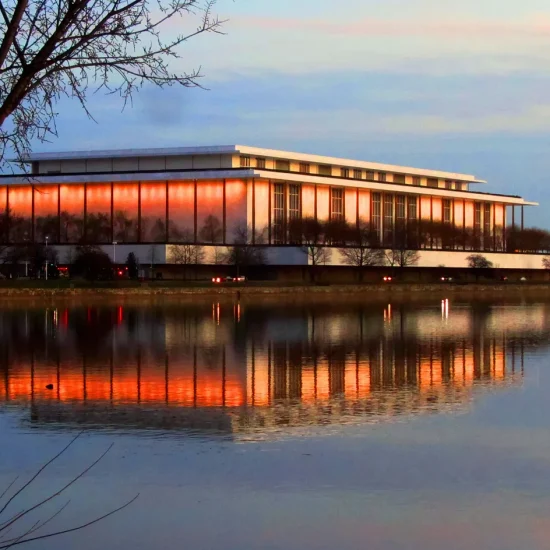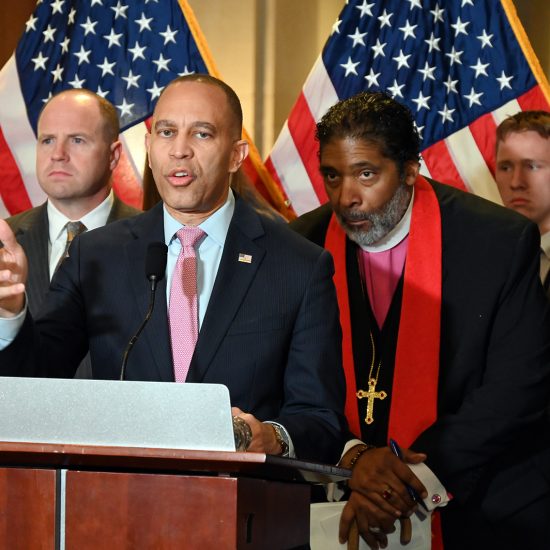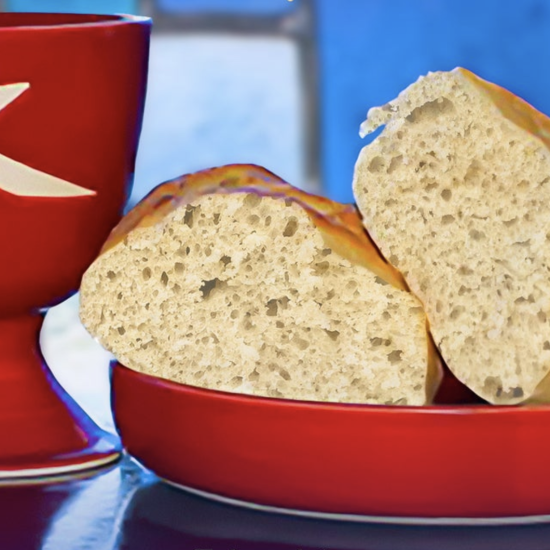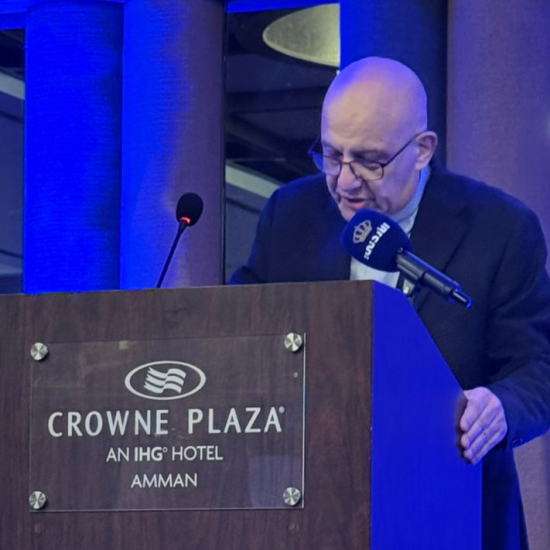
Donuts and coffee. Potluck dinners. Vacation Bible School snacks. Sunday night youth pizza dinners. Frozen casseroles for new mothers. Bereavement luncheons. Chili cook-offs. Holiday bazaars with lines of pies. Crackers and paper cups with water at Children’s Sunday School. Wednesday night suppers. Anniversary Sunday picnics. Meal trains for families of the sick. Sandwich cookies and Kool-Aid. It is evident that one of the love languages of Baptists is food.

Sarah Blackwell
Anytime is a good time to “break bread” together it seems, except ironically, in our church services. Why do we understand the healing power and sense of community food can bring and yet shy away from sharing the “bread of life” together? In a 2012 study by Lifeway Christian Resources, only 14% of Southern Baptist churches responded that they offered communion as frequently as once a month, with the largest portion (57%) offering it quarterly. Among a more widespread sampling of evangelicals, the National Association of Evangelicals reported that 70% of churches serve communion once a month.
Why are some churches who claim to be focused on resurrecting the model of the early New Testament church one of the least likely to participate regularly in a practice documented in scripture? Why is the practice of communion not more prominent in the life of many of our faith communities?
Growing up in a Disciples of Christ church, partaking in the Lord’s Supper was an important part of our weekly worship. In fact, the entire service seemed to build to the point where we would join together in this meal of discipleship. The triumphant Doxology resonated from the organ to call the servant leaders forward to distribute the elements.
I remember the special feeling of being a junior deacon and serving my friends and family — especially holding the tray as my grandmother took the elements. I cherished the quiet moments of solitude for reflection after partaking in the bread and cup.
Thus, I was at a loss when the entire four years I attended my first Baptist church, we never had communion in our Sunday morning worship services. I later found out that was reserved for occasional Sunday nights only. The second Baptist church I attended incorporated the practice with a bit more frequency in the Sunday morning services — once a quarter. It baffled me that a denomination that so clearly understood the healing, restoration, and care in sharing a meal together rarely participated in the one act of remembrance that Jesus himself asked us to do.
When I asked Baptists why they did not desire to partake in communion more often in worship, their responses ranged from “it takes too long” to “it is tedious” to “it loses its meaning if you do it too much.” Have we put so many barriers up around the “proper” observance that we have sapped the life out of it?
In my experience in many Baptist churches, the act of remembrance often takes on a solemn and formal feel. Hardly a word is spoken, faces are drawn, and, yes, it takes forever to pass the bread tray, all partake in unison, and then redo the whole process with the cup.
We need to remember Jesus’s sacrifice, but we also need to celebrate how he conquered death. I think about Jesus and a rowdy group of disciples talking over each other as they crowd into a small upper room. After silencing the rambunctious crew, Jesus expresses his thankfulness for the bread and the cup. He looks forward to the day when he will be able to gather with this beloved community again and “drink it new” in God’s kingdom (Matthew 26:29). There will be much work and sacrifice before that day, but in the end, it will be worth it.

(Will Thomas/Unsplash)
In this way, it is a meal of hope for a time when we will gather with Jesus. This is when the term “Eucharist” or “thanksgiving” best describes the practice. Think of the festive Thanksgiving celebrations we have in the United States. Yes, we can gratefully reflect on the past, but we also revel in God’s provision and hope for the future.
Like our Thanksgiving celebrations, the Lord’s Supper is a chance to acknowledge the people around us that form our community. When Paul wrote about breaking bread in 1 Corinthians 10:16, he was primarily focused on the way that sharing the bread and cup knits us into the faith community, thus the term “communion.” Paul emphasized the need for us to recognize how communion is not only a way to connect to God but to connect with each other as well. He used the “breaking of bread” as a means to remind people in the community to humble themselves and make sure all were treated justly.
Before he offers the famous words of institution in 1 Corinthians 11, he first scolds the Corinthians for the factions that have formed to bar the poor from full participation in the church by excluding them from the agape meal. Instead, he says that we must humbly examine ourselves before participation but not cast judgment on others.
Communion is not only a vertical reconciling to God but a horizontal one of reconciliation to each other. Baptists, though, have the tendency to privatize worship. In our fractured communities today, communion should be one of the practices that unify us within our congregations but also to the church universal. Paul saw the breaking of the bread as a vital part of community building — important enough that it is one of the only times he directly quotes Jesus in his letters.
So, how can we change the culture of communion in our churches and our own personal responses?
Better education about communion and how it can aid spiritual formation.
The first thing we are told about the community of believers in Acts 2:42 is “they devoted themselves to the apostles’ teaching and to fellowship, to the breaking of bread and to prayer.” Breaking of bread is not an afterthought sidelined to observance every few weeks but one of the four pillars of the early New Testament church. We cannot claim the New Testament Church as a model without each of these: teaching, fellowship, communion, and prayer.
Luke describes them breaking bread with “glad and sincere hearts” and “praising God” (Acts 2:46). Does your church teach about the different ways to think of this observance — Lord’s Supper, Communion, and Eucharist? In addition, the first observance of the Lord’s Supper had close ties to the Jewish observance of Passover. Passover was an important time for remembrance of all of God’s mighty acts as well as community building. Can you include this tradition with your Lord’s Supper ordinance?
Can you explain it as a time of reconciliation, forgiveness, and hope for the future? An important part of the process for Paul was self-examination of wrongs that we may have committed and need to be made right. Are you highlighting both the vertical component of reconciliation to God and the horizontal component of right-living in community?
Take time to begin a dialog about the multi-faceted meanings of the ordinance. Encourage members to share their perceptions and discuss how the process could be more meaningful. How can liturgy or guided prayers make the time more profound?
More efficient means of distribution.
For Baptists, the preaching of the word usually is the most prominent portion of our services. Thus, the main reason many churches do not include the spiritual practice of communion more often is simply that it takes too long and cuts into time for preaching (often forgetting the average adult attention span is about 20 minutes).
The pandemic caused many churches to pivot on the means of distribution of the elements, if communion was observed at all. Thus, this is a good time to try out different means of distribution such as individually packaged elements to be picked up on the way into the service, small sites set up throughout the sanctuary for people to come forward and receive the elements, having communion available before worship services during a time of silent reflection, or including a midweek communion service.
Creative approaches to participation.
One of the common excuses I hear for limiting communion is that it will become less meaningful if done too often. This was not my personal experience growing up; on the contrary, I found regular practice made it more meaningful as it does for other disciplines like prayer. But it does not mean that some creativity and variety cannot be employed. Try to have your worship service build to the point where communion is the highlight rather than an afterthought by employing these strategies:
- Use the time to honor the mission field workers your church supports by using elements that might be present in their location. Use technology to take communion with them virtually as a sign of support from across the globe.
- Provide questions for reflection, artwork, or a poem to contemplate in the worship guide or on the screens.
- Find ways to differentiate between the Lord’s Supper, Communion, and Eucharist observances based on the liturgical calendar or the scripture focus for the week.
- Decorate the Lord’s table for different seasons of the church calendar or for special services such as Maundy Thursday, Ash Wednesday, Pentecost, etc.
- Make your table signify welcome and inclusion. Include on placards the word “welcome” in a variety of languages to remind your congregation that this is the world’s meal at God’s table.
- Remind your congregants of the people around the world that are lifting the glass to their lips at the same time and thus their connection to something much larger than themselves.
- Recount their connections to Christians through the centuries who have participated in the ordinance including their own ancestors or prominent historical figures.
- Include inspirational quotations or testimonies about communion in the worship service.
- Give a word of reflection at your Wednesday night suppers or other community meals on the importance of “breaking bread together.”
- Celebrate and acknowledge those that are taking communion with your family of faith for the first time.
- Host “full agape meals” as described in the New Testament that include the words of institution.
In Luke 24, Jesus encountered two followers on the road to Emmaus. As they walked together, they discussed both the recent miraculous events surrounding Jesus’s death and resurrection as well as related scripture. In the account, though, “they recognized him” only after Jesus “was at the table with them” (Luke 24:31). It was not in the scripture teaching or preaching but in the act of breaking bread together that Jesus revealed himself in a simple, yet profound, way. How many encounters like this are we missing out on in our churches by not providing opportunities to “break bread” with Jesus?
Ashley Lovett noted in a 2019 essay in Baptist Quarterly that English theologian Samuel Wells once identified seven actions that make up the practice: “At the table, we offer our gifts, lift our hearts, give thanks, remember our story, invite God to make Jesus present to us again, break the bread, and share food with one another.”
In our fractured and disjointed world today, we need this time together now more than ever. With some training and intention, we all can look forward to the spiritual nourishment of sharing the bread of life and cup of love together even more than the donuts and coffee.
Sarah Blackwell is a 2020 graduate of the Gardner-Webb School of Divinity in Boiling Springs, NC. She loves Wednesday night suppers, VBS snacks, the “Hot Now” donuts, and the Sunday morning (truly legendary) bacon at Providence Baptist Church in Charlotte, North Carolina. Follow her writings at proximitytolove.org.






